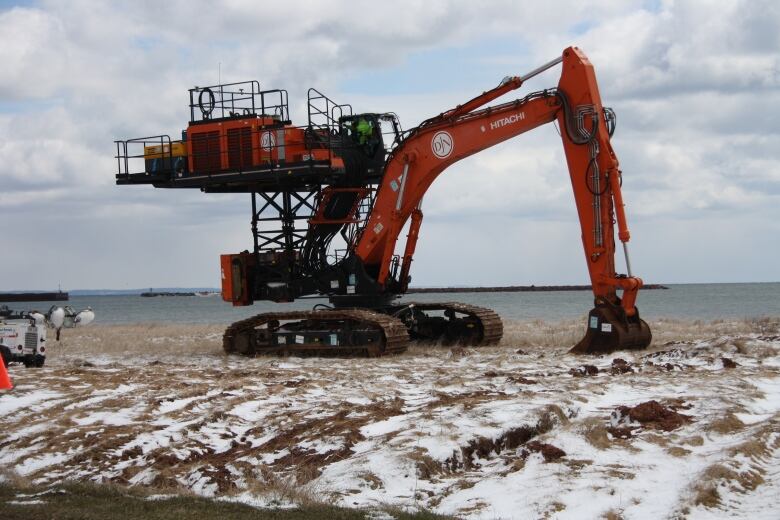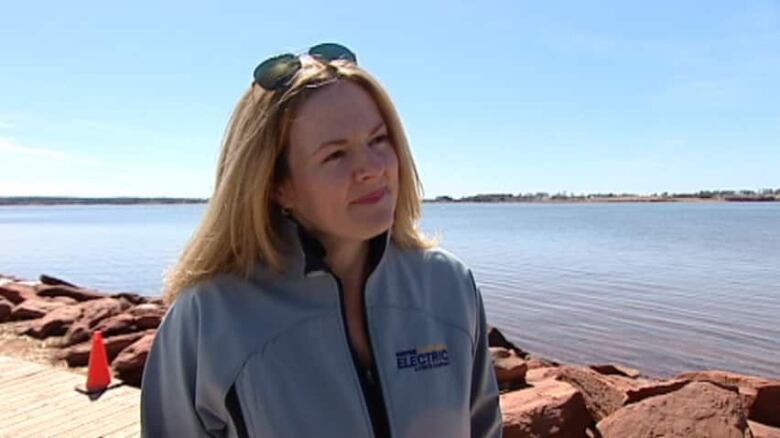Electric cable project across Northumberland Strait to go ahead immediately
Environmental plans fully approved

Maritime Electric's planto add two new underwater electriccables between P.E.I. and New Brunswick has received provincial and federal environmental approval and work will begin this weekend.
Energy minister Paula Biggar madethe announcement in the Legislature Friday morning.
"Major environmental impact assessments for the project have been approved by the governments of Canada, New Brunswick and Prince Edward Island," said Biggar. The minister said that review included consultations with the PEI Fishermen's Association, First Nations and other stakeholders.
The cables will allow Maritime Electric to import up to 360 MW of electricity, bolstering the 200 MW cables installed four decades ago that are currently serving P.E.I., shipping power over from New Brunswick.
The utility says demand for electricity peaked to 262 MW in 2015. Some of that powercomes from wind energy generated on the Island, but whenthat's not available Maritime Electric currently has to fill in with higher-priced energy from its fuel-fired generators.
The new cables will also allow for more export of wind energy from the Island.
Most significant P.E.I. project since Confederation Bridge

"This is the most significant, strategic investment in the province since the construction of the Confederation Bridge," said Biggar in the House.
The cost of the projected is estimated to be upwards of $140 million. The federal government has provided $50 million,with the rest coming from the P.E.I. government. The cables will be owned by the province and leased to Maritime Electric.
Work could begin as early as Saturday
Archaeological divers were in the water Friday, and Maritime Electric spokeswoman, Kim Griffin, says exploratory work could begin as early as Saturday on the Cape Tormentine side.

An excavator that can work in the water, called a "Starfish," will be testing rock nearboth shorelinesover the next two months.
"We need to be sure there is not going to be rock that will cause a problem during the laying of the cable."
Griffin expects the massivemachine to arrive on the P.E.I. side of the Strait in about a week. She said there are only four or five of these machines in the world. It was shipped to Canada from Belgium, and then trucked to the siteon eleven transport trucks and reassembled.
Dredgers will arrive next week and will be investigating areas a little further off-shore.
Work will stop end the end of June until mid-October.
Cable laying happening during hurricane season

That's an agreement Maritime Electric reached with fishermen after half-a-dozen consultation sessions, even though that will mean the actual laying of the cable will happen during hurricane season.
"It's a tough time of year to be doing this work. We got a lot of feedback from people when we were initially going to do it in the summer, and they asked us to try and move it into the fall. The fall could be a challenge for us from a weather perspective," said Griffin.
But fishermen in New Brunswick and P.E.I. were worried summerwork could disrupt lobster breeding in the Strait.
"There is some risk on the other end but we felt that it was really important to do that," said Griffin, adding the utility and project managers will be watching the weather closely.
Environmental monitoring will continue
Griffin said the work in the fall will take about four weeks. That's when two trenches will be dug to bury the cables in the seabed of the Northumberland Strait, following the former ferry route from Borden-Carleton, P.E.I. to Cape Tormentine, New Brunswick.
How to dig those trenches also changed after fishermen raised concerns.
Two fishermen's groups in New Brunswick have asked for compensation if the cables negatively impact commercial fishing in any way. A Fisheries and Oceans assessment of the project, included in the environment assessment, didn't flag any serious concerns, but Maritime Electric has committed to continue environmental monitoring throughout construction and will continue periodic evaluations once the cables are operating.
The cables could be transmitting energy as early as mid-November, if all goes as planned, according to the utility.












_(720p).jpg)


 OFFICIAL HD MUSIC VIDEO.jpg)
.jpg)



























































































